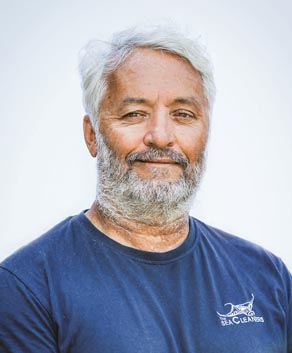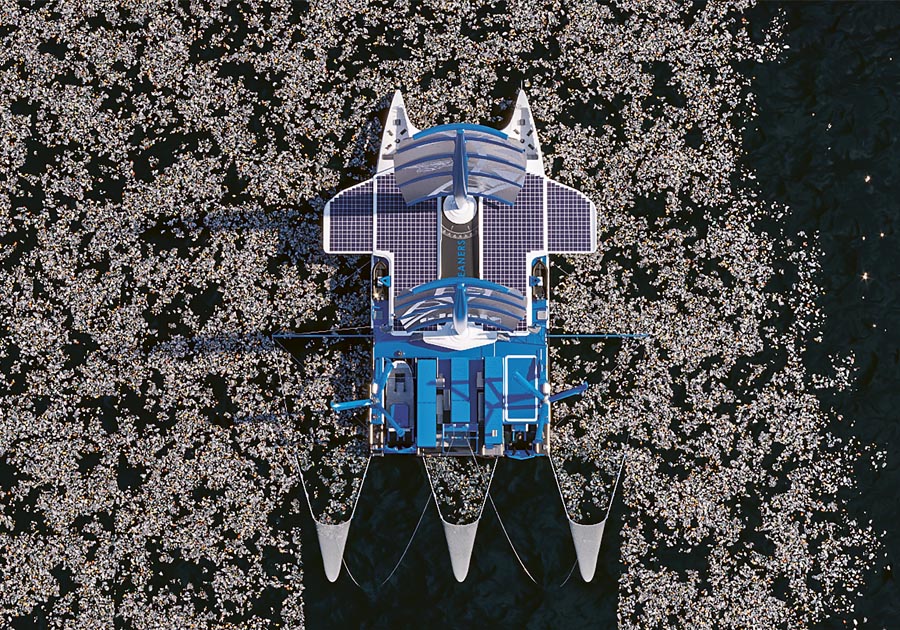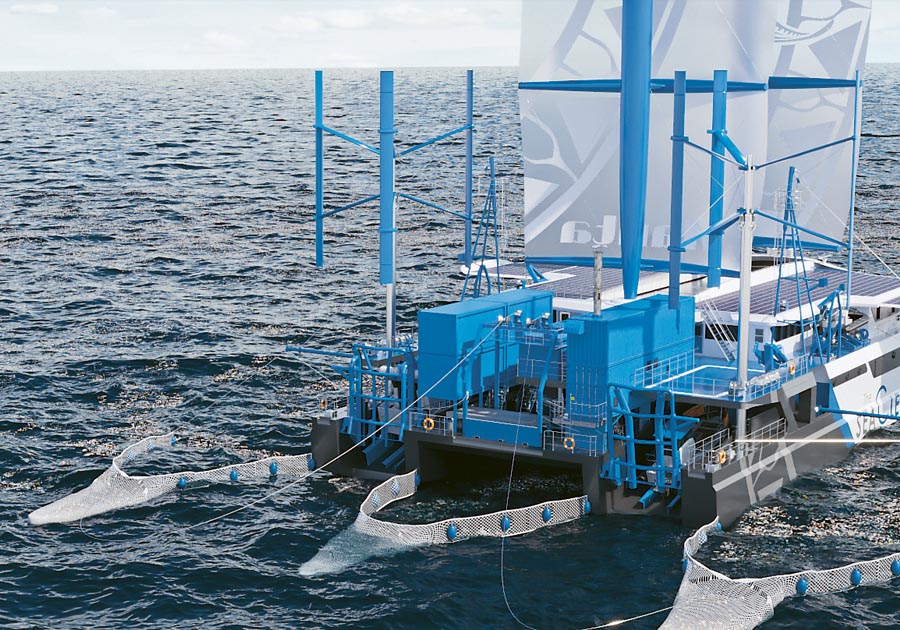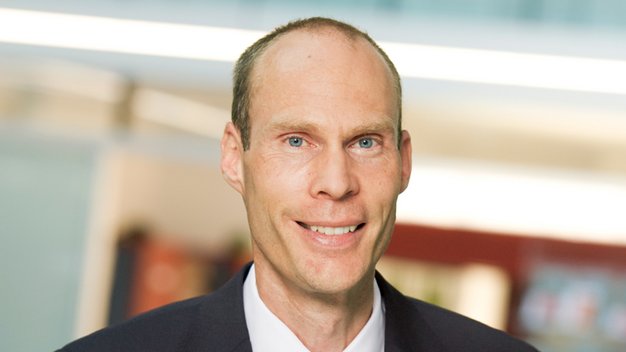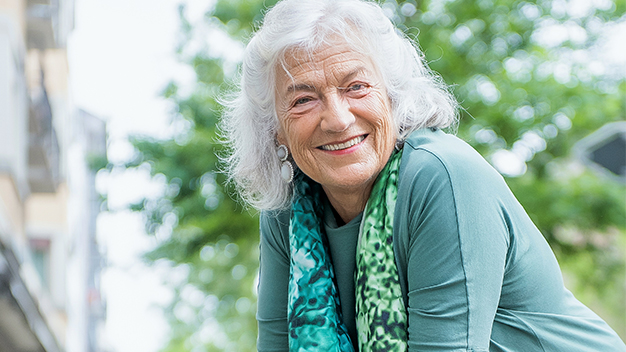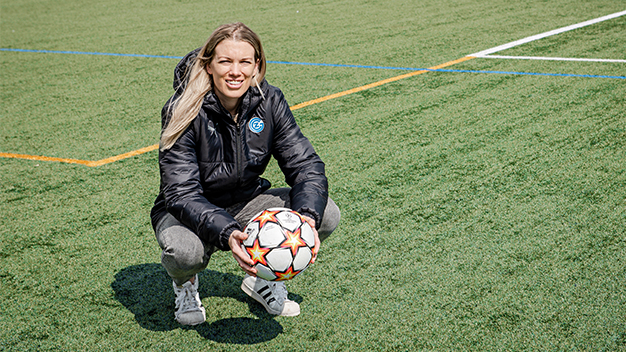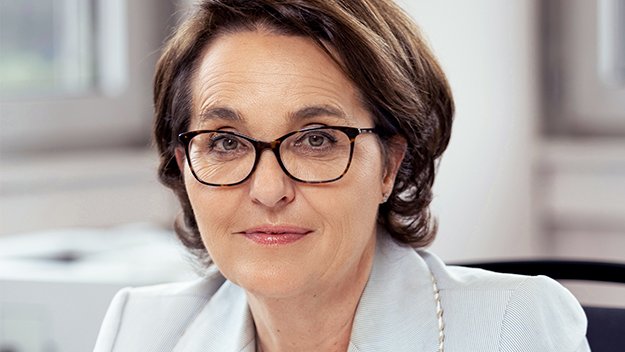Journalist: Eric Johnson | Photographer: The SeaCleaners | Magazin: Green opportunity – November 2021
Waste plastic kills millions of marine animals by choking, entanglement or poisoning – at a global rate of three per second. A Franco-Swiss charity, The SeaCleaners, aims to reverse the polymer tide and with it its wildlife devastation. Chairman/founder Yvan Bourgnon spoke to ceo magazine about his mission to save the seas.
Ten million tonnes per year of plastic, 17 tonnes a minute, are tipped into the Earth’s oceans. And the volume is rising?
Without a major counterresponse, ocean plastic is projected to triple by 2040. That would be 50 kg for each metre of coastline. By 2050, the sea would have the same mass of plastic as it does fish. This waste kills and maims wildlife, and it causes them to reproduce less and less. The chemicals within the plastics disturb their ecosystems. The plastics add to climate change by reflecting more heat into the air. But they don’t damage only nature, they harm humans, too. Ocean plastic costs tourism and fisheries 14 billion US dollars every year, according to the UN Environment Programme.
So should we just ban plastic?
Everyone should minimise their consumption, and plastic can be displaced more readily than ever. But in the wealthier world this is much easier than in, say, Africa or Bangladesh. As higher-income people earn more, they can afford to cut back on plastic; as lower-income people earn more, it’s the opposite. Cheap, accessible plastic is the first thing they buy more of. The problem is collection and disposal. In the poorer parts of the world, the river is the rubbish tip. It’s normal to throw waste in the river, because, ‘miraculously’, it just disappears. We in the developed world need to help the less-developed world, from where most of the ocean plastic comes, to collect and dispose of waste properly.
The company’s aim is to rid the world’s oceans of waste, especially the plastics thrown into rivers and along coasts. Its approach is a complementary combination of high tech and social campaigning. The tech is a novel ship that will harvest 5,000–10,000 tonnes per year of ocean-going rubbish. Campaigns will happen in part on board: with demonstrations and education at sea and in port, especially in Africa, southeast Asia and Latin America, where the problem is worst and the money to fight it is least. Awareness-raising is under way already in workshops at companies, schools and universities, and clean-up events.
www.theseacleaners.org
And The SeaCleaners is developing the technology to do that.
Since 2017, we’ve coordinated 25,000 hours of study, engineering and trials towards the creation of Manta, a deep-water ship that will collect and dispose of sea plastic, as well as Mobula, a smaller boat for shallower, harder-to-reach waters. Mobula 8 is now operational and will see action in Indonesia by the end of 2021. Construction of Manta will start in 2022 and we’ll launch in 2024. We’ve raised one third of the investment so far, and now that we’ve finished a complete design, fund-raising is taking off. A key question we faced was how to dispose of the waste we collect. Originally we thought we’d return to shore for disposal, but in some less-developed places the collected plastic might end up back in the sea. So instead, we’ll convert the plastic to energy to run the ship: that saves energy and carbon emissions; and because we’ll store less waste, we can stay at sea for three weeks at a time.
“Ocean plastic costs tourism and fisheries 14 billion US dollars every year.”
Is there a social aim alongside the technological one?
When Manta is in port, we’ll continue our job on land. We’ll show people how the technology works and raise their awareness of the waste problem and its solutions. The only way to convince people is to show them. In time, we want to have a Manta and a few Mobulas at the mouth of every major river that feeds plastic into the oceans. Ten rivers – in Africa, Asia and South America – deliver 90% of all sea plastic.
Yvan Bourgnon (50) follows his passions, and he loves catamarans. As a boy, with his parents and elder brother, he left for a four-year world tour by sailboat. The brothers became professional racing sailors and racked up trophy upon trophy – especially in catamarans. Then came adventuring. The pinnacle was a circumnavigation on a wide-open catamaran from 2013 to 2015. As he sailed, Yvan couldn’t help but see the sea – full of plastic waste. So, he transposed his passion for roaming the seas into saving them, and founded The SeaCleaners. Naturally, the mission involves a catamaran, suitably modified to pick up and process waterborne rubbish.
So you’re trying to change the way people think about waste?
In France, where I live, we have 17,000 trucks that collect waste every day. Why don’t we have a few hundred boats doing the same? We have people working full-time to collect cigarette butts that amount to a few tonnes – we can afford this! It’ll take time for this to sink into peoples’ heads. When I started to think about sea waste in 2015, science was just beginning to wake up to the problem. Now science is completely awake; it’s up to politics to get on with solutions. Plastic will be in our life, no matter how we fight it: this is a good time to be pragmatic and say we must solve the waste problem.
Is The SeaCleaners a company or a charity?
Plastics disposal and recycling aren’t rewarding businesses, so we’re a charity. In glass and metals, people can make money, but with plastics, governments and NGOs have to lead the way. They must create incentives to handle plastics properly and penalties for not doing so. There also should be and will be niches for involvement of for-profit companies; some are working with us already. Other companies who support our work are just trying to do the right thing. That includes some plastics companies.
“Everyone should minimise their plastic consumption.”
Are there other organisations similar to The SeaCleaners?
Many organisations are active, which is good, but it’s still not enough to cope with a problem of this size. One of the good ones is The Ocean Cleanup, based in the Netherlands. Their focus is more on plastics in rivers, ours is on the sea, so we complement each other. The Ocean Cleanup’s challenge is that to collect plastic in a river, you usually need to block part of it, and this is problematic for traffic on the river. Either way, we’re both trying to collect plastic while it’s still in the water, before it sinks to the bottom and degrades into microplastics – these are almost impossible to collect.
Your CV is that of a sailor and adventurer. How does that translate into being a CEO?
As a skipper, I managed teams of some 25 people on land and at sea. I had to raise millions of euros in funding and coordinate sponsors. I had a hand in boat and equipment development. Oh, and I had to plan and conduct races. So, I have a strong background as an executive; I know how to lead The SeaCleaners. I loved competing on the sea, but since 2015, at the age of 44, it wasn’t enough for me anymore just to sail very fast from point a to point b. The ocean gave me so much: now I want to give back to the ocean.
Yvan Bourgnon – In the spotlight
You’re still sailing, right?
Yes, not as a professional anymore, but for pleasure. I especially enjoy sailing with my son, Mathis, who won the 2019 European championship on a sport catamaran. I do my sailing now at the weekends, because during the week I have work to do.
Is your only work with The SeaCleaners, or are you doing other things?
As a person I want to concentrate on one main thing, and I’ve found that in The SeaCleaners. It’s a big job and a big organisation. We have a strong staff and already over 1,000 volunteers. This isn’t the time to stop.
Where do you see yourself in 2030?
Not in a new life – the fight to protect the seas is deeply engrained within me. I want to expand our work to the whole world and help billions of people to understand the plastics problem. In the past few years we’ve done so much, in the next ten I know we can do so much more.

